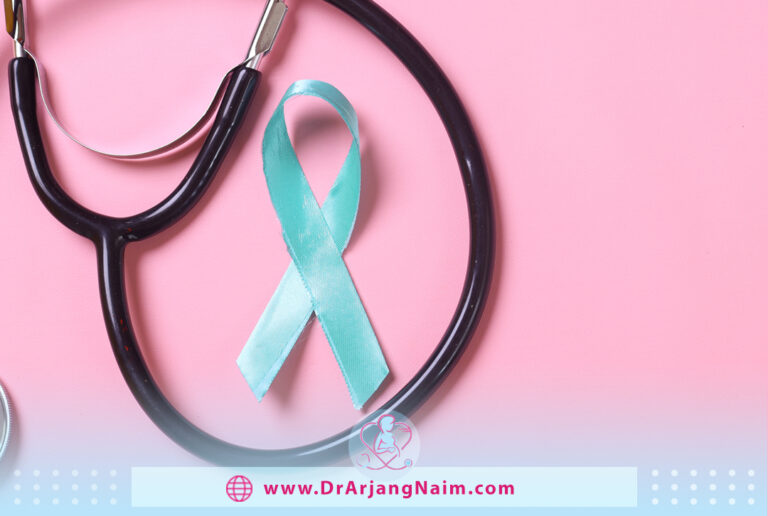Vulvar cancer is a type of cancer that occurs on the external surface of the female genital tract. The vulva is the area of skin that surrounds the urethra and vagina, which includes the clitoris and labia.
Vulvar cancer usually occurs as a lump or sore on the vulva, which is often itchy. Although it can occur at any age, it is more commonly diagnosed in older people.
Treatment for vulvar cancer usually involves surgery to remove the cancer and a small amount of surrounding healthy tissue. Sometimes, surgery requires the removal of the entire vulva. The earlier vulvar cancer is diagnosed, the less likely it is that extensive surgery will be needed for treatment.

Symptoms of vulvar cancer
It may not cause any symptoms in its early stages. When symptoms appear, they can include:
- A discolored patch of skin
- Pain with urination
- Abnormal bleeding
- Itching in the vulvar area
- Pain and tenderness in the vulvar area
- A lump or wart-like sores on the vulva
Causes
Vulvar cancer can develop due to various factors, though the exact cause isn’t always clear. Some potential causes and risk factors include:
- HPV (Human Papillomavirus) Infection: Certain strains of HPV, especially HPV 16 and 18, have been linked to an increased risk of vulvar cancer.
- Age: The risk of vulvar cancer increases with age, particularly in women over 50.
- Smoking: Tobacco use may elevate the risk of developing vulvar cancer.
- Chronic Skin Conditions: Long-term inflammatory conditions of the vulva, such as lichen sclerosis, can slightly increase the risk.
- Immunosuppression: Conditions or medications that weaken the immune system may contribute to a higher risk.
- Previous History: Women who have had previous cases of cervical, vaginal, or vulvar intraepithelial neoplasia (VIN) have a higher risk of vulvar cancer.
- Genetics: In rare cases, genetic factors or a family history can increase susceptibility.
- Personal Hygiene: Poor hygiene might increase the risk of certain infections contributing to cancer development.
It’s important to note that while these factors can increase the likelihood of developing vulvar cancer, many women with one or more risk factors never develop the disease, and some women without any known risk factors do. Regular check-ups, HPV vaccination, and maintaining overall health can help in prevention and early detection. Consulting with a healthcare professional is advisable if you’re concerned about your risk.
Types of vulvar cancer
Vulvar cancer can be classified into several types, primarily based on the cells or tissues where the cancer begins. The most common types include:
- Squamous Cell: Carcinoma is the most prevalent type, accounting for about 90% of all vulvar cancers. It originates in the thin, flat cells lining the surface of the vulva. Squamous cell carcinomas can develop from precancerous changes known as vulvar intraepithelial neoplasia (VIN).
- Adenocarcinoma: Less common than squamous cell carcinoma, adenocarcinoma forms in the glandular cells of the vulva. There are different subtypes of adenocarcinoma, such as adenoid cystic carcinoma and extramammary Paget’s disease.
- Melanoma: Vulvar melanoma arises from the pigment-producing cells (melanocytes) in the vulva. It’s relatively rare compared to other types of vulvar cancer but tends to be more aggressive.
- Basal Cell Carcinoma: This rare type begins in the skin’s basal cells.
- Sarcoma: Vulvar sarcomas is a rare cancer that develops in the connective tissues (muscle, fat, blood vessels) of the vulva.
Each type may have different characteristics, treatment approaches, and prognoses. The treatment plan for vulvar cancer depends on the type and stage of cancer, as well as individual health factors.
How common is vulvar cancer?
Vulvar cancer is relatively rare compared to other types of gynecological cancers. It accounts for a small percentage of cancers in women. The exact prevalence can vary by region and demographic factors.
In general, according to statistics from various health organizations, the incidence of vulvar cancer is estimated to be around 1-2 cases per 100,000 women per year in developed countries. However, it’s important to note that these rates can vary globally and may be influenced by factors such as age, lifestyle, and prevalence of risk factors like HPV infection.
The risk of developing vulvar cancer tends to increase with age, with most cases diagnosed in women aged 65 and older. Additionally, the widespread use of HPV vaccines has been effective in reducing the risk of certain HPV-related cancers, including vulvar cancer, by protecting against high-risk HPV strains.
Routine gynecological check-ups, early detection, and awareness of symptoms are crucial in diagnosing and treating vulvar cancer at earlier stages, improving the chances of successful outcomes.
Vulvar cancer stages
If the tests show signs of cancer, the doctor will pay attention to the size of the tumor and its spread. This is called staging. Staging includes:
- Stage I. The tumor is small and has not spread from the vulva and perineum.
- Stage II. The cancer has spread to nearby tissues but not to the lymph nodes.
- Stage III. It spreads to nearby tissues and the lymph nodes in the groin.
- Stage IV. The cancer has spread to the upper part of the vagina, urethra, or anus or to a part of the body that is further away.

How is vulvar cancer diagnosed?
Diagnosing vulvar cancer typically involves a series of steps and examinations.
Physical examination
A doctor thoroughly examines the vulva, looking for any visible abnormalities, lumps, or skin color or texture changes.
Biopsy
A biopsy is performed if any suspicious areas are found during the physical exam. This involves removing a small tissue sample from the affected area for examination under a microscope by a pathologist. The biopsy helps confirm the presence of cancer cells and determines the type and stage of the cancer.
Imaging tests
Depending on the biopsy results and the extent of suspected spread, imaging tests like CT scans, MRI scans, PET scans, or ultrasound may be used to evaluate the extent of the cancer and whether it has spread to nearby lymph nodes or other organs.
Lymph node examination
If there’s a risk that the cancer has spread, a sentinel lymph node biopsy or removal of nearby lymph nodes may be recommended to check for cancer cells.
HPV testing
Testing for the presence of HPV infection may also be part of the diagnostic process, as certain strains of HPV are linked to vulvar cancer.
Following the diagnosis, staging helps determine the extent and spread of the cancer, guiding the treatment plan. Staging involves evaluating the size of the tumor, its depth, involvement of nearby tissues, lymph node involvement, and potential spread to distant organs.
A multidisciplinary team, including gynecologists, oncologists, pathologists, and other specialists, often collaborates to determine the best treatment approach based on the specific characteristics of the cancer and the individual’s health. Regular follow-ups and ongoing monitoring are crucial to track the progress and response to treatment.
Treatment
Treatment options for vulvar cancer depend on the type, stage, and location of the cancer, as well as your overall health and preferences.

Surgery
Operations used to treat vulvar cancer include:
- Removal of cancer and a margin of healthy tissue (excision): This procedure, also called wide local excision or radical excision, involves cutting out the cancer and a small amount of surrounding normal tissue. Cutting out what doctors call a margin of normal tissue helps ensure that all cancer cells are removed.
- Removal of part of the vulva or the entire vulva (vulvectomy): Surgery to remove part of the vulva (partial vulvectomy) or the entire vulva, including the underlying tissue (radical vulvectomy), may be an option for more significant cancers. People with larger cancers may consider a combination of radiation and chemotherapy to shrink the tumor before surgery, which may allow for less surgery.
- Removal of several nearby lymph nodes (sentinel node biopsy): The surgeon may use a sentinel node biopsy to determine if the cancer has spread to the lymph nodes. This procedure identifies lymph nodes that are most likely to contain cancer so they can be removed and analyzed. Cancer is unlikely to be present in other lymph nodes if not found in the first lymph node.
- Removal of many lymph nodes: If the cancer has spread to the lymph nodes, many lymph nodes may be removed to reduce the risk of the cancer spreading to distant areas of the body.
Surgery risks complications such as infection and problems in healing around the incision. Removing lymph nodes can cause fluid retention and swelling in the leg, a condition called lymphedema.
Radiation therapy
Radiation therapy uses high-energy beams such as X-rays and protons to destroy cancer cells. This therapy for vulvar cancer is usually given by a machine that moves around the body and directs the radiation to precise spots on the skin.
Radiation therapy is sometimes used to shrink large vulvar cancers to increase the chance of successful surgery. Sometimes, radiation therapy is combined with chemotherapy, which can make cancer cells more vulnerable to radiation.
If cancer cells are found in the lymph nodes, the doctor may recommend radiation to the area around the lymph nodes to destroy any cancer cells that may remain after surgery. Sometimes, radiation therapy is combined with chemotherapy in these conditions.

Chemotherapy
Chemotherapy is a drug treatment that uses chemicals to kill cancer cells. Drugs are usually administered through a vein in the arm or by mouth.
For those with advanced vulvar cancer that has spread to other areas of the body, chemotherapy may be an option. Chemotherapy is sometimes combined with radiation therapy to shrink large vulvar cancers to increase the chance that surgery will be successful. Chemotherapy may also be combined with radiation therapy to treat cancer that has spread to the lymph nodes.
Targeted drug therapy
Targeted drug therapies focus on specific abnormalities in cancer cells. By blocking these abnormalities, targeted drug therapies can cause cancer cells to die. Targeted therapy may be an option for advanced vulvar cancer.
Immunotherapy
Immunotherapy uses the body’s immune system to fight cancer. The body’s disease-fighting immune system may not attack the cancer because cancer cells produce proteins that help them hide from immune system cells. Immunotherapy works by interfering with this process. Immunotherapy may be an option for treating advanced vulvar cancer.
The bottom line
Vulvar cancer, though relatively rare, is a serious condition that primarily affects women. While the exact cause isn’t always straightforward, certain risk factors like HPV infection, age, smoking, and immune system conditions may contribute to its development.
Early detection through regular gynecological exams, awareness of symptoms like persistent itching, pain, lumps, or changes in the vulvar area, and seeking prompt medical attention for any concerns are crucial. Diagnosis involves a physical examination, biopsies, imaging tests, and possibly HPV testing, followed by staging to determine the extent of the cancer.
Treatment options for vulvar cancer may include surgery, radiation therapy, chemotherapy, or a combination of these, depending on the stage and type of cancer. The treatment plan is often tailored to the individual’s situation and health.
Regular follow-ups and monitoring post-treatment are important to track progress and manage any potential recurrence. As with many cancers, a multidisciplinary approach involving various healthcare specialists is vital for comprehensive care and support. Early detection and timely treatment can significantly improve outcomes for individuals diagnosed with vulvar cancer.
Additional questions
- Is vulvar cancer serious?
It can be. Untreated vulvar cancer is life-threatening. Cancer that has spread to lymph nodes or other parts of your body is much more difficult to treat than cancer that is caught early.
While there is always a risk that the cancer will return after treatment (recurrence), most people who are treated in the early stages of the disease remain cancer-free.
- Where does vulvar cancer usually start?
Vulvar cancer typically starts in the outer vaginal lips (labia majora) or inner vaginal lips (labia minora). It can also originate in the clitoris or the glands around the vaginal opening. Most vulvar cancers are squamous cell carcinomas arising from the skin cells covering the vulva.
- What is the survival rate of vulvar cancer?
The five-year relative survival rate for people with vulvar cancer is approximately 70%. However, survival rates increase when people are diagnosed and treated in the early stages. For example, the five-year survival rate for localized cancer is approximately 86%. As the cancer spreads, the five-year survival rate drops to approximately 30 percent. However, prognosis depends on factors unique to diagnosis, including health and response to treatment.
- Is adenocarcinoma a serious cancer?
It depends on the type of cancer you were diagnosed with and how long it was at the time of diagnosis. Some adenocarcinomas are more serious than others.
- What foods are bad for HPV?
Studies have shown that women who did not consume fruits, dark green vegetables, and beans were significantly at risk of developing high-risk HPV infection of the genital tract. In addition, consumption of whole grains and dairy products was inversely associated with low-risk HPV infection.
References
https://www.mayoclinic.org/diseases-conditions/vulvar-cancer/diagnosis-treatment/drc-20368072
https://www.cancer.org.au/cancer-information/types-of-cancer/vulvar-cancer
https://my.clevelandclinic.org/health/diseases/6220-vulvar-cancer
https://familydoctor.org/condition/vulvar-cancer/
https://www.medicalnewstoday.com/articles/173108#summary
https://www.moffitt.org/cancers/vulvar-cancer/
https://www.webmd.com/cancer/what-is-vulvar-cancer
https://www.healthline.com/health/cancer-vulva#outlook




